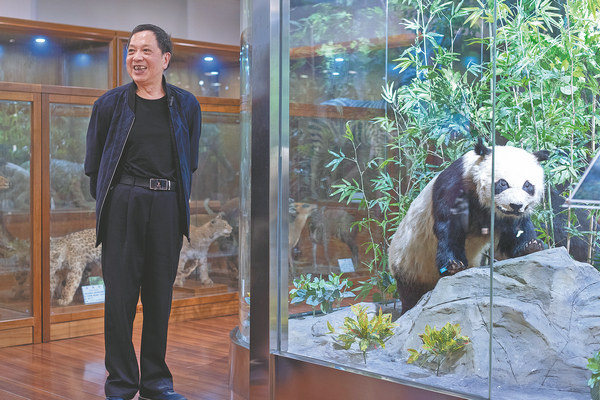Preserving the past to enrich the future
By He Qi | China Daily | Updated: 2023-07-22 08:17

"Half of the protected or endangered animals in the museum were collected through national animal research, but afterward, only animals that die due to disease, accident or natural causes can be used for taxidermy," he explains.
In the early 1990s, while searching for new materials at Shanghai Zoo, he found a binturong (often referred to as a bear cat) that had just died of illness. He quickly bought it from the zoo for 2,000 yuan ($280).
"I am so familiar with what animals the museum was missing, so I bought the binturong without hesitation," Tang Shimin recalls. He packed the peeled binturong skin in a burlap bag and rushed back to the university by bus with the help of a student.
To guarantee the best result, Tang Shimin finished the taxidermy process in three days.
What he didn't know was that it turned to be the last binturong Shanghai Zoo ever kept.
This is a rare and endangered animal in China.
Due to the Tang family's efforts, most kinds of animals have been preserved in the museum, including many endangered and extinct species in China, such as a Lipotes vexillifer (Chinese river dolphins) found in Nanjing, Jiangsu province, in 1964 and Rafetus swinhoei (Yangtze River turtle) found in Taihu Lake in 1950.
"Taxidermy is very helpful for our teaching, and is also important material for scientific research, especially for animals that have been around for a long time and are facing extinction," Tang Shimin says.
Nowadays, Tang Shimin's major duty has been shifted to preserve the integrity of taxidermy in the museum, as its collection is believed to cover all existing or known species. Despite regular spraying and pest control, taxidermy often spoils.
"Since large-sized or precious taxidermy is no longer able to be made (due to the animal protection law), my current job is to ensure the existing taxidermy lasts as long as possible while waiting for new materials. Then I make new exhibits, mainly to replace the damaged ones," Tang Shimin says.
In the museum, Tang Shimin has a refrigerator full of corpses of birds and small animals waiting to be taxidermied.
























